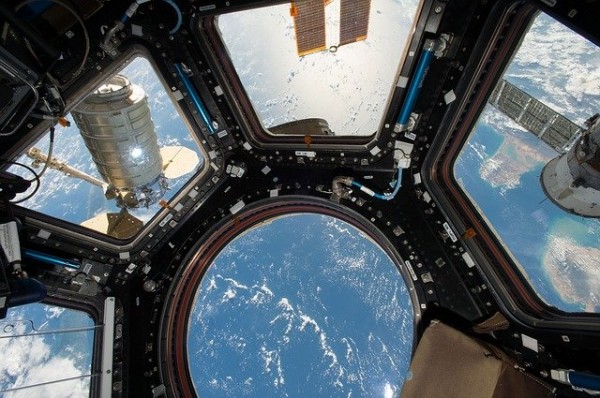By Telegiz , | April 10, 2020
- PREV
- Image1of0
- NEXT

Like Us on Facebook
A trip to space
NASA worked together with Russian agency Roscosmos to send astronauts to the International Space Station (ISS) amid the coronavirus pandemic. The team includes Anatoli Ivanishin and Ivan Vagner from Roscosmos, and Chris Cassidy from NASA. The three space personnel were launched on Thursday morning at around 4:05 a.m. ET.
The event was executed despite several others around the world being cancelled or postponed due to the lockdown. Relatives of the astronauts, as well as the media and industry officials, couldn't join the send-off because of the restrictions. The ones who were present maintained the social distancing guidelines by staying at least six feet away from one another and wearing face masks.
The safety precautions for the pandemic are standard practice for astronauts before their launch.
NASA has always kept a strict viewpoint concerning the health of its personnel. The organization quarantines its astronauts before a mission to space to avoid contaminating the existing team on the ISS. It has been kept as a priority guideline since the childhood days of the agency.
Communications specialist at NASA's Johnson Space Center, Courtney Beasly, said that they consider the health and welfare of their team of the utmost importance. She also said, "All of our crew must stay in quarantine for two weeks before they launch. This ensures that they aren't sick or incubating an illness when they get to the space station and is called 'health stabilization.'"
Before the launch, the team adhered to the US Centers for Disease Control and Prevention (CDC) guidelines and recommendations to avoid contracting the deadly virus. Both agencies kept the standard two-week quarantine for the crew, as stated by Beasly.
Ms Beasly explained what happens during the two-week ordeal and what the astronauts spend their time on.
Every single astronaut will be staying in their private crew quarters, which are located at Kennedy and Johnson Space Centers for NASA, and Baikonur for Roscosmos. They are prevented from direct contact with anyone unless they have been pre-cleared by flight surgeons from NASA. The duration is then spent on flight preparations, contacting family members via social media or video calls, studying, working out, and of course, resting.
The return journey
The team will land on the station at around 9:30 a.m. ET, approximately six hours after the launch on Thursday morning. After waiting for another two hours, they will be let in and join the crew inside, including Oleg Skripochka from Russia, and Jessica Meir and Andrew Morgan from NASA.
The arriving team will replace Skripochka and Meir, who spent six months on the station, as well as Morgan, who was sent to space on the 50th anniversary of the Apollo 11 moon landing and stayed a gruelling eight months on the craft.
Upon their return home, however, Skripochka and Meir will experience a very different home due to the recent COVID-19 outbreak.
A protocol for returning astronauts has already been set in place by NASA to ensure the astronauts can recondition themselves to the change in gravity. Several doctors and NASA staff will assist them in getting back up and monitor their health progress in the weeks to come.
This time, due to the increased risk of infection, the agency has heightened its protocols to follow the guidelines set forth by the authorities strictly. They will be required to maintain social distancing among the crew and maintain their hand hygiene at all times.
On April 15, a ceremony for changing command will be held just two days before the current crew returns to Earth.
The mission will be the first to utilize an American spacecraft to launch astronauts from Americal territory ever since the 2011 final space shuttle mission. The Russian Soyuz spacecraft has since been operated to bring the astronauts to and from the ISS.
SpaceX's Demo-2 is the last test flight before the system can be certified to be used as the carrier for NASA's crews.
The agency is strictly monitoring CDC guidelines to implement to their mission planning, and consider postponing the launch date should the need arise.
-
Use of Coronavirus Pandemic Drones Raises Privacy Concerns: Drones Spread Fear, Local Officials Say

-
Coronavirus Hampers The Delivery Of Lockheed Martin F-35 Stealth Fighters For 2020

-
Instagram Speeds Up Plans to Add Account Memorialization Feature Due to COVID-19 Deaths

-
NASA: Perseverance Plans to Bring 'Mars Rock' to Earth in 2031

-
600 Dead And 3,000 In The Hospital as Iranians Believed Drinking High-Concentrations of Alcohol Can Cure The Coronavirus

-
600 Dead And 3,000 In The Hospital as Iranians Believed Drinking High-Concentrations of Alcohol Can Cure The Coronavirus

-
COVID-19: Doctors, Nurses Use Virtual Reality to Learn New Skills in Treating Coronavirus Patients







